The maned wolf is a member of the canine family, along with wolves, jackals, coyotes, and domestic dogs. This South American mammal looks like a mixture between a fox and a wolf, but in reality, it is not closely related to either. In fact, they aren’t closely related to any other canines. Their closest living relatives are bush dogs. Read on to learn about the maned wolf.
Description of the Maned Wolf
Biologists describe maned wolves as large foxes with super-elongated legs. They stand 35 inches tall (just an inch less than 3 feet) at the shoulder, with much of that size consisting of just legs.
Their ears are also quite long, and typically measure 7 in. tall. Thick fur covers the entire creature, and the hair on the back of its neck is denser and more distinct. This is where the name maned wolf comes from.
Interesting Facts About the Maned Wolf
These creatures are not only interesting looking, but they lead interesting lives as well. Despite their odd appearance, they are actually well adapted for survival in the grasslands of South America.
- Lanky Legs – No, that maned wolf is not walking on stilts. Despite their awkwardly long-legged appearance, the lanky legs are actually specifically adapted to aid in hunting. Much like the African serval, long legs help the maned wolf spot prey in tall grassland habitats.
- Tippy Tap – While hunting those legs also come in handy. These “wolves” stand very still and use their large ears to listen for prey. Once they home in on a potential meal, they tap their feet to drive their prey out of hiding. When it flees, they leap in the air and pounce down on it.
- Sole Survivor – Maned wolves aren’t just genetically different from other canines, they also differ in behavior as well. Most large canines, like wolves, African hunting dogs, or coyotes, live in packs. Maned wolves differ from the norm because they are typically solitary.
- Lonely Lovers – Even mated pairs are mostly solitary. Maned wolves are monogamous, and a pair will live in and defend the same territory, but rarely actually interact. They only interact for the sake of reproduction.
Habitat of the Maned Wolf
While these canines will live in a variety of habitats, they thrive in grasslands. Tall grasses provide the perfect ecosystem for small mammal prey, like mice and rats. These mammals are perfectly adapted for hunting in grassland habitats. In addition to grasslands, maned wolves live in scrublands, prairies, forests, and sometimes swamps.
Distribution of the Maned Wolf
Maned wolves reside in South America. Much of their range extends through central and western Brazil, but they also roam northern Bolivia and eastern Paraguay. Small, fragmented populations live in Argentina and Uruguay, but they are rare in these regions. Also, zoos worldwide keep these animals, and they breed successfully in captivity
Diet of the Maned Wolf
These predators are omnivores that feed primarily on small mammals. As discussed previously, they hunt using their keen hearing and long legs. They hunt rats, mice, rabbits, birds, and sometimes fish.
Some scientists estimate that nearly half their diet comes from plant matter. Commonly eaten plants include sugarcane, berries, fruits, and tubers. One fruit, the wolf apple, actually earned its name because it is a favorite food of the maned wolf.
Maned Wolf and Human Interaction
The IUCN Red List designates these creatures as Near Threatened. A number of different factors influence their decline, including deforestation, agriculture, and habitat destruction. Cars also hit them, and feral or domestic dogs attack them.
In some areas, humans hunt them, being of the opinion because they believe the maned wolf preys on livestock. All of these factors are reducing the overall population, especially in areas of fragmented populations.
Domestication
Humans have not domesticated red wolves in any way.
Does the Maned Wolf Make a Good Pet
No, maned wolves do not make good pets. In most places it is illegal to own a maned wolf, because they are a protected species. Even if it were legal to own them as pets, these large canines are wild animals, and can be unpredictable.
Maned Wolf Care
Zoos can successfully keep and breed maned wolves, which is especially important in the face of their decline in the wild. Zoos that keep maned wolves have a dedicated Species Survival Plan, which allows them to match animals based on genetics, to keep their offspring healthy and genetically diverse.
Zookeepers feed them a diet similar to that of their wild counterparts, with a mixture of fruits, vegetables, small mammals, and other protein sources. They also provide them with environmental enrichment, like toys, new scents, and puzzle feeders, to keep them mentally stimulated.
Behavior of the Maned Wolf
These creatures are one of the few large canines that are entirely solitary. They do not form packs or social groups, and monogamous pairs will share a territory, but do not interact outside of reproduction.
Most hunting occurs at night, usually sometime between sunset and midnight. They spend the rest of the night patrolling their territories, which they mark with urine.
Reproduction of the Maned Wolf
Maned wolves are monogamous, which means that they usually reproduce with the same mate year after year. Breeding occurs between November and April, and the gestation period is approximately two months long.
The youngsters, called pups, and are covered in fuzzy black fur at birth. Litters can contain anywhere from two to six pups. They do not fully wean and become self-sufficient until approximately one year of age.

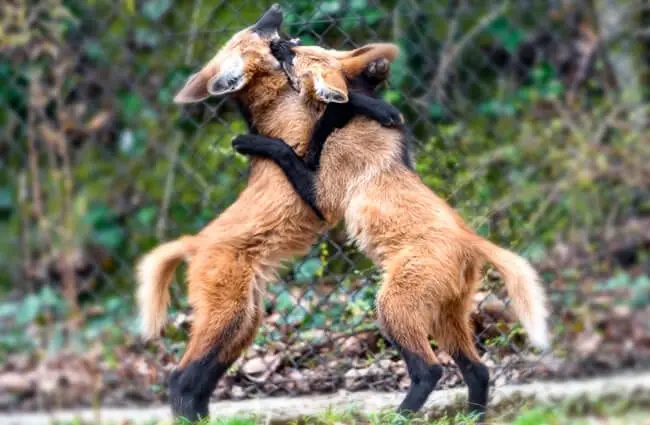


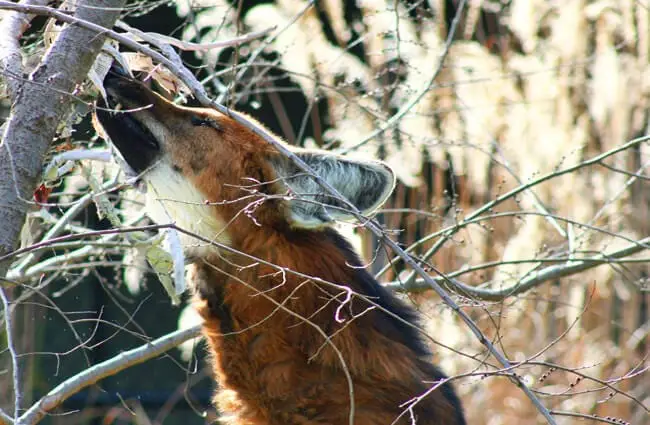
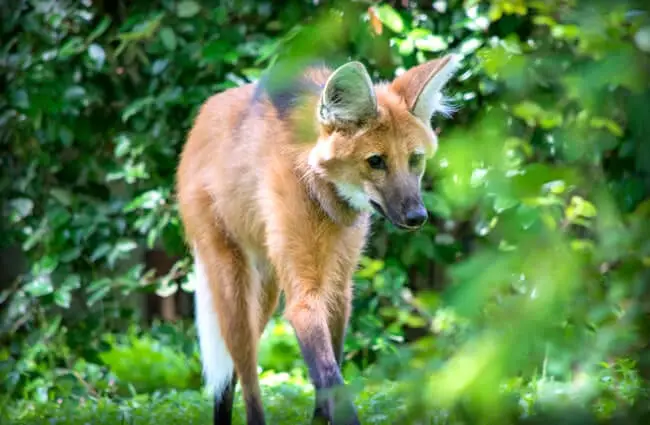

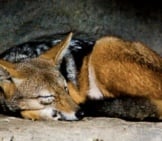
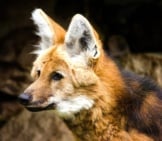

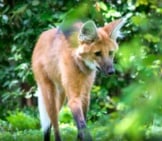
![Red Angus Closeup of a beautiful Red Angus cowPhoto by: U.S. Department of Agriculture [pubic domain]https://creativecommons.org/licenses/by/2.0/](https://animals.net/wp-content/uploads/2020/03/Red-Angus-4-238x178.jpg)












![Red Angus Closeup of a beautiful Red Angus cowPhoto by: U.S. Department of Agriculture [pubic domain]https://creativecommons.org/licenses/by/2.0/](https://animals.net/wp-content/uploads/2020/03/Red-Angus-4-100x75.jpg)

